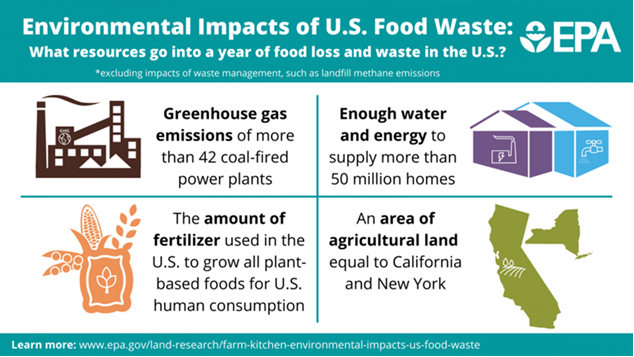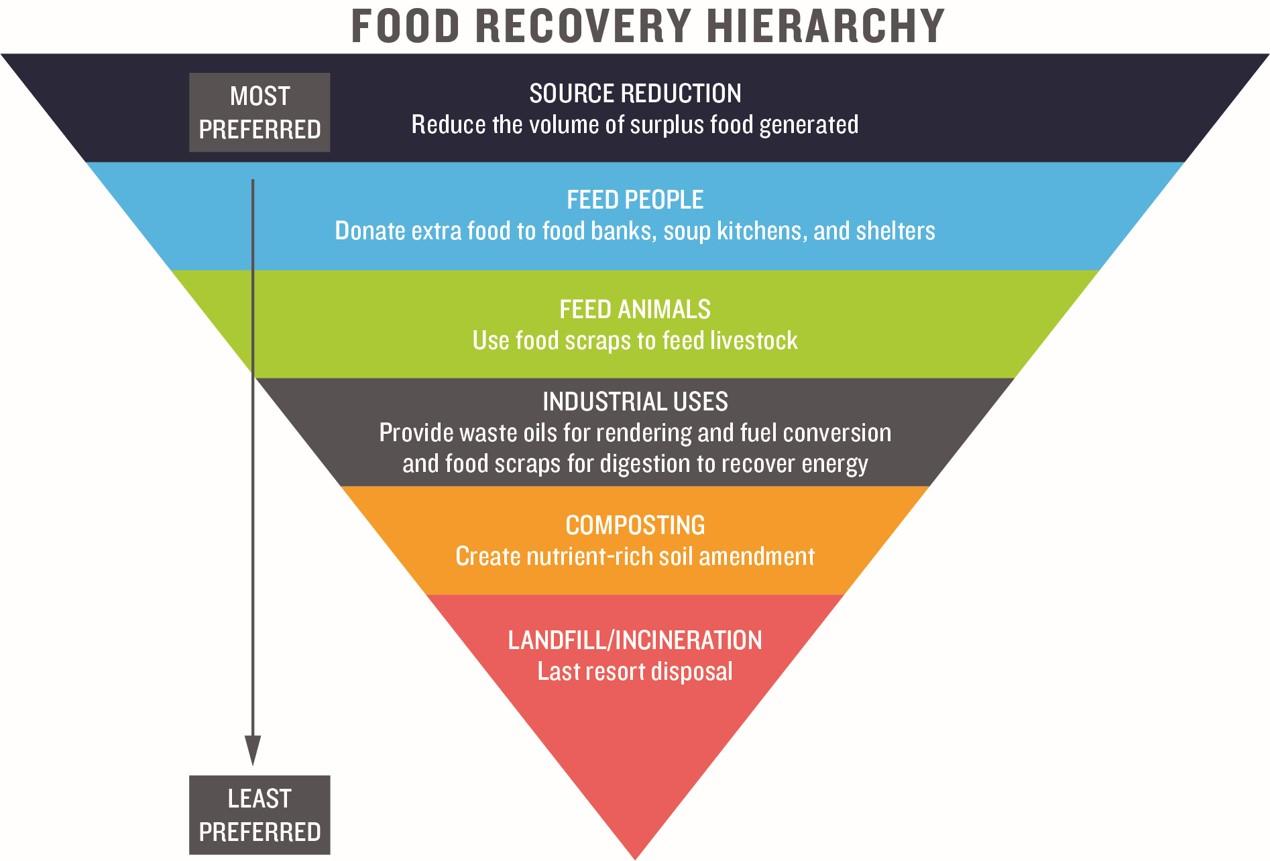This article was written by Nina Sevilla and Yvette Cabrera for the Natural Resources Defense Counsel. Republished with permission.
For the first time in its history, the United States Environmental Protection Agency (EPA) is publishing a quantitative report underscoring the importance of reducing food waste to address climate change. This initial report, From Farm to Kitchen: The Environmental Impacts of Food Waste, analyzes the environmental impacts of food loss and waste (FLW) throughout the food supply chain—from farm to kitchen. EPA’s follow-up report, expected to be published in early 2022, will focus on the impacts of different end of life solutions for food waste, like composting and anaerobic digestion.

We had the opportunity to discuss the report with Shannon Kenny, Senior Advisor on Food Loss and Food Waste at EPA and co-author of the report, and Claudia Fabiano, from the Sustainable Management of Food team at EPA. Their insights are shared throughout this blog.
"Food waste is one of the things you can take action on related to climate change every day."
The report draws from peer-reviewed academic studies and government publications to produce the most robust estimates for total food loss and waste and its environmental impacts. It also references non-governmental literature (such as NRDC reports) to provide context. The findings and conclusions that EPA makes in the report are in line with what we published in Wasted (2017), while also providing 2021 estimates of where food waste is coming from and what its impacts are.

There is a ton of great information in the report, and we encourage you to read through all the details, but here are a few of the major findings and key takeaways:
- Each year, U.S. FLW from farm to kitchen embodies the same GHG emissions as 42 coal fired power plants. This is a staggering number, and most stood out to Kenny, who hopes it will drive consumers and legislators to action. Kenny says, “food waste is a big contributor to climate change, but preventing it is a very impactful and feasible solution.” Fabiano adds “this is one of the things you can take action on related to climate change every day, whether it’s meal planning, shopping your refrigerator first or composting whatever's left.” And the best part of food waste reduction compared to other consumer-focused climate change solutions such as installing heat pumps or getting an electric car is, as Kenny puts it, “we are asking folks to save money, not to spend money.”
"This report puts the spotlight on needing to prevent food waste. That is where we are going to get the most bang for our buck from a climate change perspective."
- The food waste reduction strategy with the greatest environmental benefits is not recycling, it is prevention. If we meet our national 2030 goal of cutting FLW by 50%, we could reduce the equivalent of GHGs emissions from 23 coal fired power plants every year. Preventing food waste from happening in the first place is a key component of meeting that goal. When food is needlessly tossed, the hidden losses include the energy and resources needed to grow, process, and transport it. Fabiano explains, “this report puts the spotlight on needing to prevent food waste. That is where we are going to get the most bang for our buck from a climate change perspective.”
- The sectors to target for the largest energy savings and greenhouse gas emissions reductions are households and restaurants. The report defines the final stage of the food supply chain as “consumption,” when food is finally eaten, such as in restaurants and in the home. The consumption stage is responsible for roughly half of U.S. FLW. Education is the main way we can prevent food waste in these sectors. Kenny adds, “if you want to reduce consumption sector food waste, in addition to education we need to bring in the upstream stakeholders, the food manufacturers and grocery retailers, to help build a system that enables consumers to waste less.”
"Food insecurity isn't driven by scarcity, it’s a distribution issue."
- Even if we met the food needs of the entire food insecure population in the U.S., there would still be excess food. The report shows that we have enough food in the U.S. to feed everybody. Kenny explains, “food insecurity isn't driven by scarcity, it’s a distribution issue. If we fed everyone in the country fully and there was no food insecurity, we would still have food waste. We need to start looking at an array of solutions—prevention solutions, not just rescue solutions.” The root causes of why people do not have enough resources to purchase food to meet their needs are varied, but this finding further underscores the importance of prevention as well as working on equitable solutions to food security.
- Globally, the U.S. is the third largest overall generator of food waste and third largest generator of food waste per capita. The report also found that the environmental impacts of food waste in the U.S. are greater than in other countries for two reasons: first, the U.S. wastes more animal products, and second, more food waste occurs at the consumption level (in homes and restaurants) while in other countries most food waste occurs further upstream in the food chain, like on farms.
- This series of reports will help set priorities and inform policy to meet our national 2030 goal of cutting FLW by 50%. The report definitively outlined what is at stake with the issue of food waste, providing stakeholders, like state and local governments, with invaluable data. It will also support the work of the federal agencies to meet the national goal. Fabiano explains that EPA originally interpreted the 50% reduction goal as "a diversion goal—to cut in half the amount of food going to landfill and combustion facilities.” But EPA recently re-aligned the national goal with UN Sustainable Development Goal 12.3 to also include preventing food waste from happening as a part of achieving the 50% reduction. The recently published report reaffirms EPA’s choice to work up the food recovery hierarchy and focus on prevention.

To meet our national goal, we need action on every level, including households, cities, states, and the federal government. This much-awaited report will be endlessly useful fostering dialogue and creating unified priorities. We are looking forward to the release of the second report to learn more about the different impacts of the end-of-life management of food waste and how they compare to the farm to kitchen impacts.
